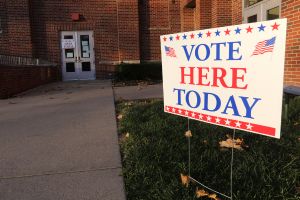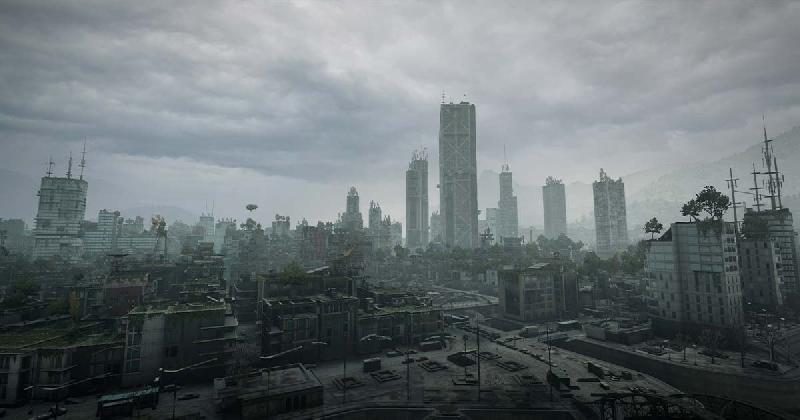Of all the challenges preppers might have to face, civil unrest is probably the most unpredictable. It might sound strange right. A nuclear blast, or an EMP, you can fall back on tech, safety measures and your storehouse of supplies.
When you watch and read interviews from people who’ve been through a civil war, major civil unrest event or wide-spread riots, a lot of them will say “I didn’t see it coming!” They didn’t know what to look for or know when to be concerned.
It’s especially concerning here in the western world where we are constantly being exposed to inflated media messages about hot-button things going on elsewhere. To the point that it can desensitize you to seeing the real signs of civil unrest coming straight at you!
So, we thought it was wise to look at some of the major moving forces that lead to civil unrest and how to identify when to truly be concerned. This might buy you the precious days, hours, or minutes you need to do what you need to do to stay safe.
Political Polarization
The political extremism in the US and many western nations these days isn’t as much about diametrically opposed political parties as it is that our society has forgotten how to agree to disagree and be civil about it.
Political entertainment shows only toss fuel on this fire, blurring the lines between uncivil discourse and civil unrest about to explode onto the streets.

Election years tend to really turn up the political polarization throughout western civilization.
Certain pieces of legislation and hot-button topics weighed in by higher courts are rife with the risk of sparking off civil unrest.
Signs to Watch For
Political polarization can turn into the kind of civil unrest you need to be warry of when political leaders start calling directly for action. The tricky filter you have to develop here is not to take it seriously when political pundits, media personalities, faux-journalists and celebrities start calling for action.
These are people who tend to think they have more influence than they really do. They’re also skilled at using evocative language. Yet you rarely get any serious civil unrest or real energy on the street coming from their calls to action.
In the chaos of widespread civil unrest, cities can quickly become war zones. When things get too intense, retreating to the wilderness might be your best chance for safety. But surviving out there requires more than just basic skills—you need to master the long game.
That’s why I trust this guide. It’s not just another survival manual; it’s a straightforward resource that imparts the time-tested wisdom of our ancestors who thrived by living off the land.
So, as you prepare for your escape, make sure this handbook is in your backpack. It could be the crucial advantage you need when everything else falls apart.
Drunken Sporting Events

It might sound strange, but sports riots can cause a lot of economic devastation and potential loss of life for people living in urban and suburban areas.
While some of the worst sports riots have been overseas tied to soccer games, there have been some major incidents in the US and Canada.
Suddenly alcohol-fueled inhibition takes hold and seemingly ordinary people start vandalizing, and looting. Violence quickly follows and what started out as a cheerful event leads to overwhelmed emergency rooms and the loss of life.
Signs to Watch For
If you live in an urban or suburban area within 60 miles of any home team hosting a championship game, you need to be warry of a sports riot breaking out. Ironically the damage is likely to be worse when the home team wins, and the celebration spills out into drunken riots in the streets.
If the game is close with a lot of back-and-forth lead changes, it adds to the emotional tension. When it’s over all of that built-up tension releases into a tidal wave. Add in a splash of herd or mob mentality, and you have the perfect recipe for epic mayhem.
Religious Protests and Vandalism of Sacred Sites

Religion ranks right up there with politics when it comes to things that can incite riots and civil unrest. The 24-hour news cycle, the internet and social media can all combine to throw fuel on the fire.
An event can happen on the other side of the world and the media picks it up to disseminate it amongst the masses.
Sometimes it can be a local incident, like a prankster teen or someone with mental health issues vandalizing another religion’s place of worship.
The spark ignites and other tensions like race, economic status, and social injustice cause it to spill over into a full-on riot in the streets.
Signs to Watch For
Religion-fueled riots and mass protests tend to be localized near places of worship, city districts with high population density, and university campuses.
If there’s a vandalism event, shooting, or another incident at a place of worship in your city, you need to be wary. The same holds true for sacrilegious events in other parts of the world, shrines, and places of worship that the faithful revere.
If possible, try to stay at least a mile away from these places of worship when traveling. If you live within a mile, it’s best to shutter your home and take steps to protect your property just in case. but before you consider building a tall fence for security, here’s why that might not be the best idea.
Social Media Amplification

Social media has evolved into an interesting outlet for free speech. It’s also become a tool for businesses and various content creators to increase the presence of their message through algorithms.
Phones, laptops, tablets, along with the apps and browsers within them, have algorithms built in.
They note what you and everyone else view, click on, share, likes, and interact with online. The algorithm then adjusts the content that the user is exposed to.
Content creators have gotten savvy in finding ways to make certain content more clickable or algorithm-friendly. This gives them more likes and social media ad dollars. Yet it can also amplify new stories, leading to content saturation that makes small events seem major.
Unfortunately, it also means social media amplification can easily fuel excessive protests, riots, and civil unrest that disrupt civilized life. It can prompt students to protest things half a world away or get people in Portland, Maine, picketing about things happening in Portland, Oregon.
Signs to Watch For
Dealing with social media amplification requires a two-pronged approach. The first is not to become a victim of it yourself. This starts with limiting the number of apps you use for your own social media experiences.
You should also balance this out with the variety of apps and sites you use. If you notice your favorite apps, browsers, and sites seem to be bombarding you with the same messages and content stories, switch over to a competing site.
Is this other site talking about the same subject? Are the content messages different or in different saturations elsewhere?
If you go to a competing site and you see the messages and positioned content are vastly different from what your favorite is serving up, an algorithm might be trying to make you a victim of social media amplification.
If you go to a competing site and the messages are the same, it’s a strong sign that this is indeed a serious incident. You need to then take steps to evaluate the risk of it causing severe civil unrest in your area.
Understanding the signs of impending civil unrest can provide you with valuable time to prepare and protect yourself and your family.
via askaprepper




